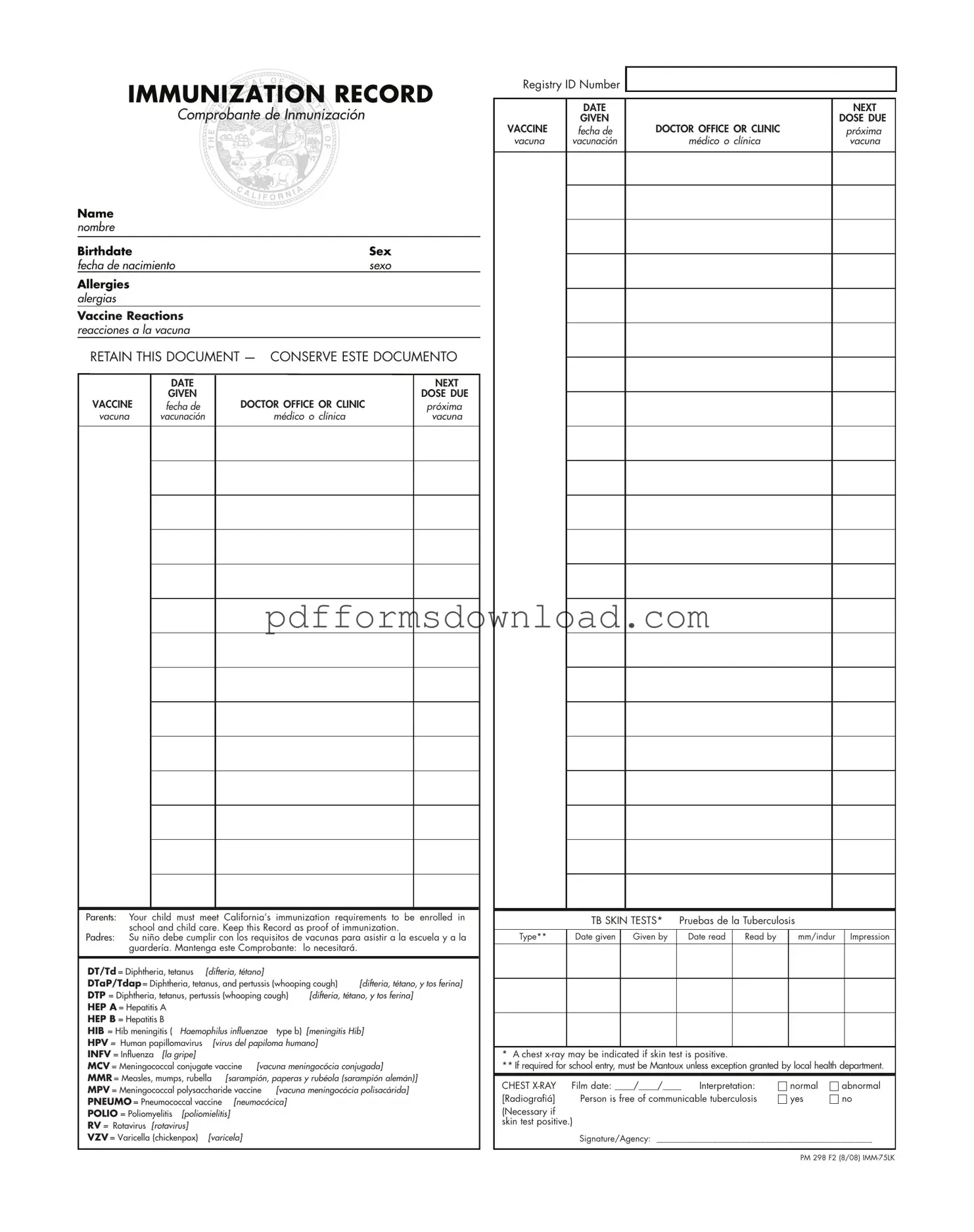What is the Immunization Record form used for?
The Immunization Record form is an essential document that tracks your child’s vaccinations. In California, schools and child care facilities require proof of immunization for enrollment. This form serves as that proof, ensuring your child meets the necessary health requirements.
What information is included on the Immunization Record form?
This form contains vital details such as your child’s name, birthdate, sex, and any allergies. It also lists the vaccines your child has received, along with dates and the name of the healthcare provider. This comprehensive record helps parents keep track of immunizations and upcoming doses.
Why is it important to keep this document?
Retaining the Immunization Record is crucial. Schools may request it during enrollment, and it provides a historical account of your child's vaccinations. Losing this document could complicate your child's school registration process and may lead to unnecessary delays in receiving required immunizations.
What should I do if my child has missed a vaccination?
If your child has missed a vaccination, contact your healthcare provider as soon as possible. They can guide you on how to catch up on missed doses. Keeping the Immunization Record updated will help you track what your child still needs.
What are the consequences of not meeting immunization requirements?
Failure to meet immunization requirements can lead to your child being excluded from school or child care. This is not only disruptive for your child but can also affect your family’s routine. It’s best to stay proactive about vaccinations to avoid any interruptions.
What vaccines are typically required for school entry?
Common vaccines required include those for Diphtheria, Tetanus, Pertussis, Measles, Mumps, Rubella, and Polio, among others. Each school may have specific requirements, so it’s wise to check with your local school district for detailed information.
What if my child has allergies or reactions to vaccines?
If your child has allergies or has experienced reactions to vaccines, discuss this with your healthcare provider. They can determine if any vaccines should be avoided and help you understand alternative options. Documenting any allergies or reactions on the Immunization Record is also important for future reference.
